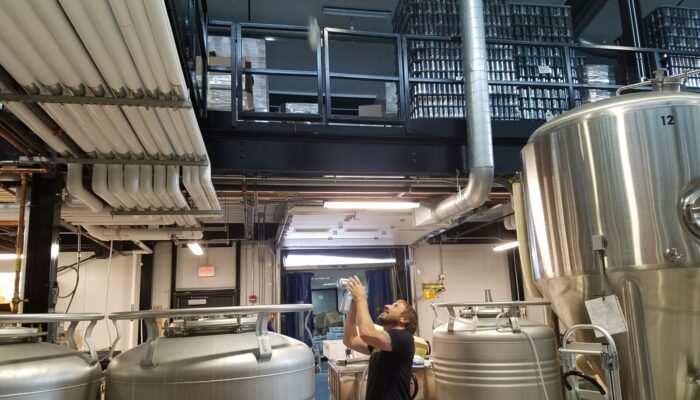Category: Water
All about water in the brewing process
Expert Topic Sustainability and Hops, Protecting Waterways and Preserving Beer
The Pacific Northwest is home to America’s most important hop producing region, one that locals work every day to promote and protect. Changes to the climate and concern over preserving the future viability of the storied agricultural land is leading farmers, brewers, and conservationists to team up to better inform drinkers of the importance of shielding its water sources.
(more...)
Expert Topic Raising Clean Water Awareness: How To Get Involved
Without clean water, every brewery would be out of business. So maintaining access to clean water is key for anybody in the brewing industry. But how do you as a brewer get involved in advocating for protecting this crucial natural resource? We spoke with an expert on the subject.
(more...)
Expert Topic Sustainable Solutions for Clean Water in the Brewing Industry
The importance of water cannot be understated, not just for beer but for life. As draught conditions persist in certain areas of the country and polluted supplies are becoming more common in others, brewers are taking the necessary steps now to be thinking about clean water.
(more...)
Understanding Your Water Footprint and its Impact on the Climate
When it comes to sustainability, one issue rises above all others: water usage. Without water, there is no beer. And as any brewer knows, water doesn’t just comprise more than 90-percent of the final product, it’s also used in nearly every step of production. Cold water cools down wort, hot water cleans and sanitizes equipment, water rinses floors and bottles and cans after filling. All the way down to employee hand washing and rinsing glasses in the tasting room, water is ubiquitous.
(more...)
Four of the Best Ways to Deaerate Your Brewing Water, Depending on Your Budget
If you worked as a brewer at Sierra Nevada Brewing circa 2005, you would have had the luxury of deaerating the brewing water with an expensive deaerating column to reduce the amount of dreaded dissolved oxygen (DO) in your cold side processes.
(more...)
Water Terminology
Anions – ions (atoms or molecules with an electrical charge) with a negative (-) electrical charge, so named because they go toward the anode in an electric field. The main anions in water are hydroxide (OH -), carbonate (CO3-2), bicarbonate (HCO3-) (which together comprise “alkalinity”), sulfate (SO4-2), nitrate (NO3-) and chloride (Cl-).
(more...)
Chloramines vs Chlorine
Most municipal water District’s will add chlorine or chloramines as a disinfectant to their water supply. This is a common practice to deliver safe water to the public but can create many issues for Brewers and Distillers affecting their finished product. The differences between Chloramines and Chlorine in your brewing water
(more...)
Reverse Osmosis & Nanofiltration
Reverse Osmosis and Nanofiltration are water membrane filtration processes designed to lower your parts per million (PPM) or total dissolved solids (TDS) in your brewing water. Both of these processes will deliver consistent water quality and both work the same way. The filtration function is achieved by forcing water through a semi permeable membrane. The water passes through the outer wall and into the center of the membrane where small pores allow most of the water molecules to pass. However, some of the ions in the water cannot pass through these pores. As a result of this process you have water with very low TDS levels when using RO membranes and higher TDS levels when using Nano membranes. RO or Nano – What’s the Difference?
(more...)
Expert Topic The Importance of and How to Read your Water Report
The make-up of water will vary, over time, with any municipal water system. To ensure good consistent brewing water that will produce a better product and a consistent product, knowing what is in your water is essential. Today, knowing that you can control the water make-up, right before brewing, allows you to control the taste and look of your brews.
(more...)



